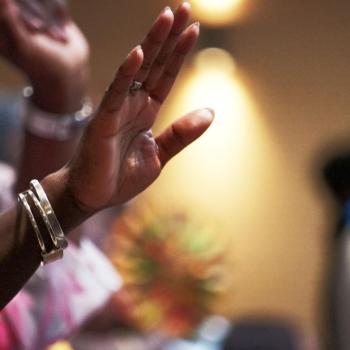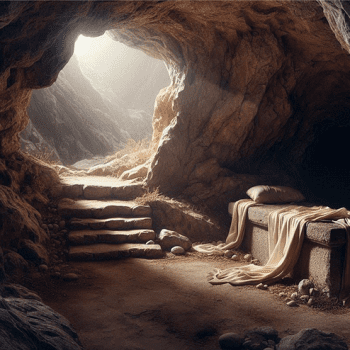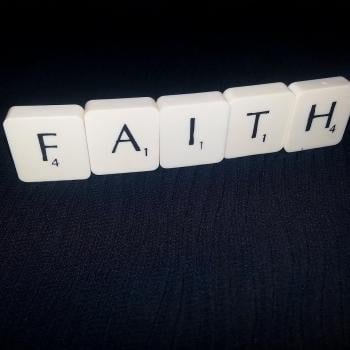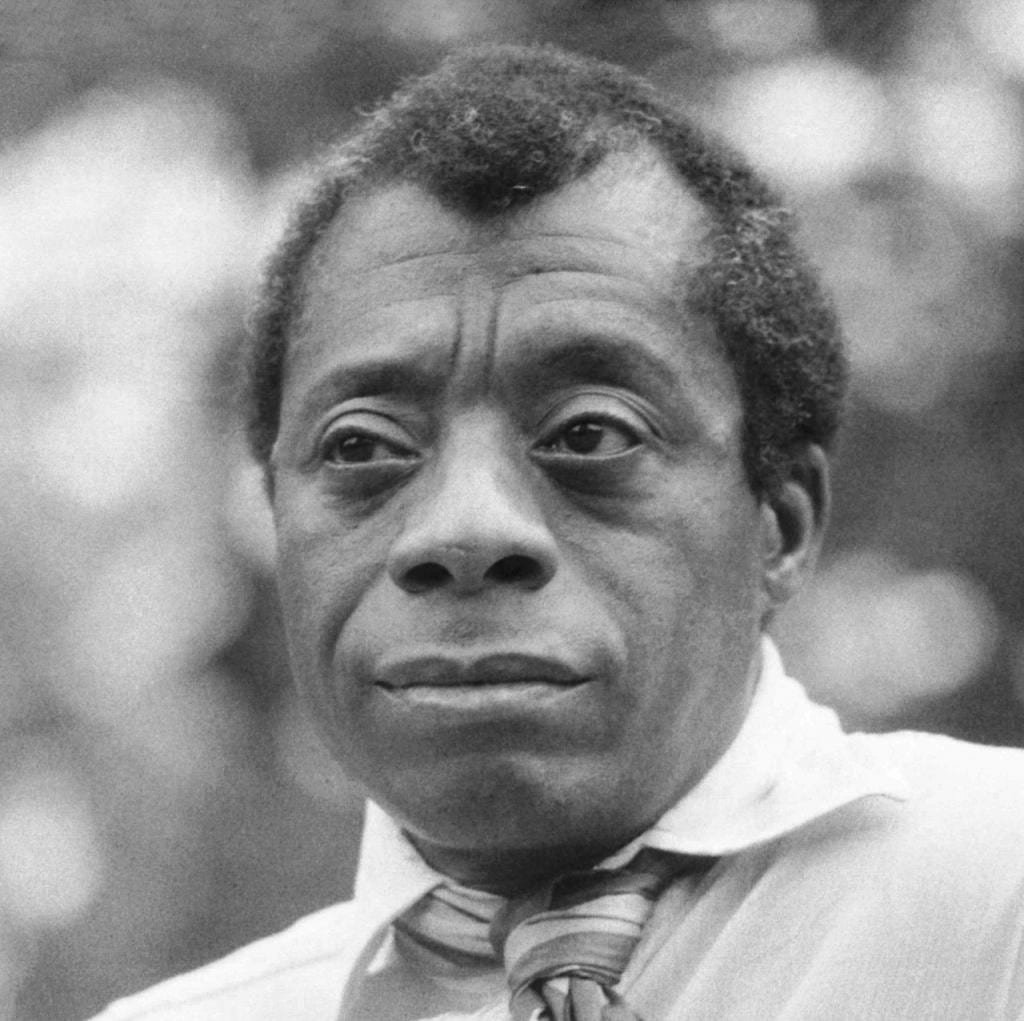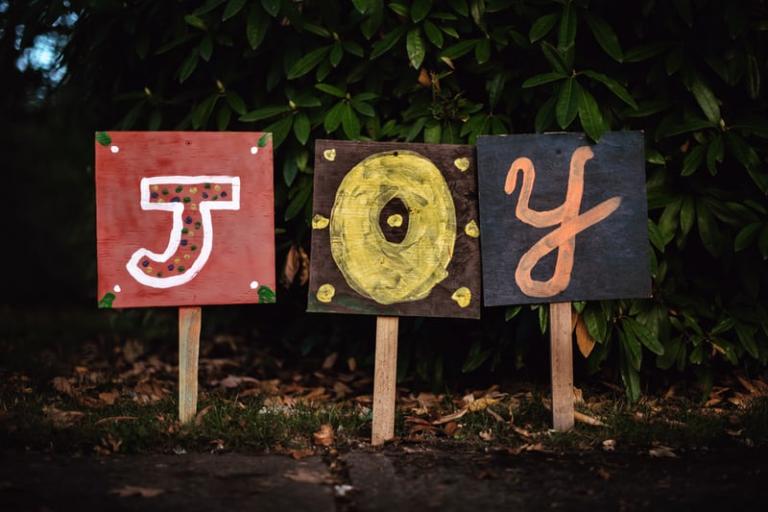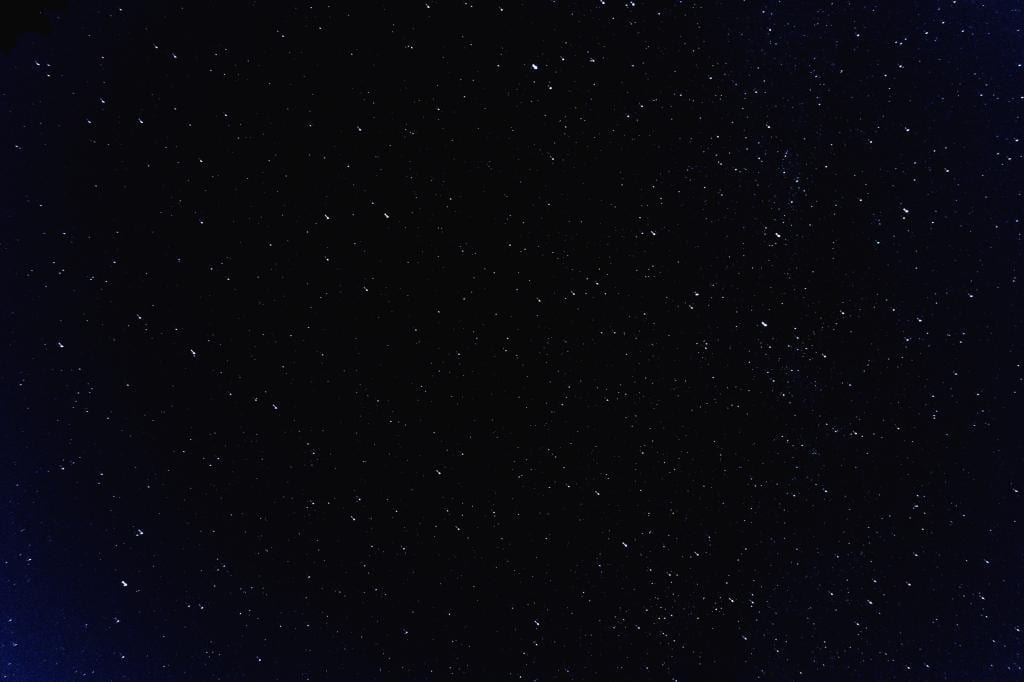We grieved this week as Notre Dame Cathedral burned. Many hearts broke while reliving memories from that sacred place: memories of visiting as a young child, or with our young child, or while backpacking Europe with a friend. There she was, whether on our phone’s feeds or on the TV or directly across the river: Our Lady and her timber spire and wooden roof, unimaginably ablaze. The cross and the altar stood surrounded by ash, proclaiming in naked symbol the Paschal Mystery itself: that God, too, stands with us through suffering and into new life.
The church’s structure will never be the same again, but Notre Dame has withstood, one article reminds us, the French Revolution, World War One, and the Nazi occupation of France. Paris’s Lady will certainly rise, as the millions of dollars donated already demonstrate.
The mystery of this Holy Week, from Maundy Thursday to Easter, is that our dying and rising are all bound up with another. The collective grief of Notre Dame’s burning helped raise the profile of three other churches that likewise burned. These three churches in Louisiana burned not because of a likely electrical fire but because of white supremacy. A regional Baptist Association set up a GoFund me fundraiser. Before the Notre Dame fire, they had raised just over $100,000. Today they have surpassed the $2 million dollar mark.
For Christians celebrating Easter today, Jesus Christ has risen. This rising is expansive in scope: Jesus Christ rises, but also brings everyone and everything into God’s resurrection movement.
It starts with a body. Or a body’s absence, to be specific. In Luke’s gospel’s version, various Mary’s and other women are there before sunrise to preserve the body with spices. But the stone is rolled away, the body is no longer in the tomb, and there are two men, angels, whose clothes dazzle like the very lightening of the sky.
Jesus Christ is risen, and while he will appear in the last chapter of Luke’s gospel to two disciples on the road to Emmaus, and to disciples gathered later in Jerusalem, he rises first on this morning to the women. Resurrection starts with a body, or a body’s absence, and it continues in possibilities broken open for other bodies. Jesus Christ rises for Mary Magdalene, the devoted disciple extraordinaire, and to Joanna, who, Luke chapter eight tells us, is married to the manager of Herod’s household himself, to Mary mother of James, to the other women who were with them. These are not meek women, or even poor women. They are capable and powerful women.
Jesus Christ has risen, and the women are rising with him. The women are the first to witness the empty tomb and the first to proclaim the message. The world is different now. They have glimpsed a renewed world, a world where love is stronger than death, which leaves them different now, too. And just then Luke lobs the unfortunate line: “this seemed to them (the men) an idle tale.” As if to say, “an empty tomb is not rational. It cannot be logically deduced or defended. These women must be imagining things.”
On the other hand, the empty tomb’s implications are not seen by those looking for an eyewitness investigative account of what did or did not happen, but rather by those whose hearts bear the capacity to love. By those whose imaginations dream new possibilities. The men, Luke reveals, lack this consciousness. The men, Luke says, “did not believe them,” except Peter, that is, passionate Peter, who carries tremendous shame at his threefold betrayal of Jesus. Aching Peter hopes for another chance to demonstrate his faithfulness, and perhaps out of desperation, aching Peter is rising, too.
Jesus Christ has risen, except many in the Christian religion have turned this transformational tale into an individual heroic feat. Jesus Christ is risen: he did it, or God did it on his behalf, and we marvel at how amazing it all is. We turn Jesus into a box office sensation: Jesus, the Superhero, back from the dead, who disappeared briefly to another galaxy and has returned to save us. Or, alternatively, we ignore the resurrection completely, awkwardly downplaying its importance for our faith.
Resurrection, however, is not only about Jesus rising. Jesus Christ sweeps everyone and everything up within God’s resurrecting movement. To talk about resurrection, and better yet, to experience it, is somehow to bear the weighty paradox of death and life evolving together at the center of the universe. Easter is about Mary, Joanna, and the women rising, Peter rising, us rising, and it is also about the universe itself rising. Resurrection, Wendell Berry shows in his classic “The Mad Farmer Liberation Front” is: the humus building under trees, the sequoias planted, the choice of love over profit, the sheer bliss of resting in a lover’s arms in a field, the practice of believing and enacting that another world is possible.
Sarah Sexton Crossan and renowned biblical scholar John Dominic Crossan traveled the world researching resurrection painting traditions. They detail their discoveries in the remarkable book Resurrecting Easter: How the West Lost and the East Kept the Original Easter Vision. In resurrection painting traditions in Eastern Orthodoxy, they show, Jesus rises up from Hades, the underworld. But he does not rise up alone. He stands over the cross, an oft-distressed gatekeeper glaring on from below, and he reaches out his hands so that Adam and Eve rise up, too. Kings David and Solomon are sometimes there, as is John the Baptist, among others.
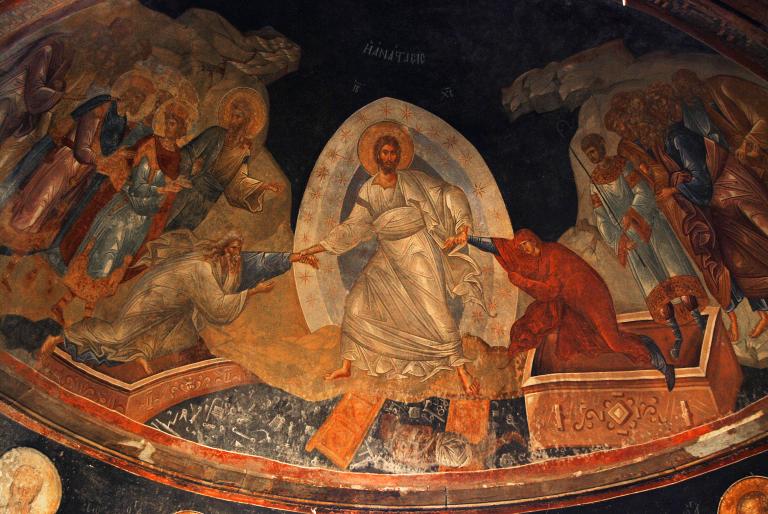
The resurrection, this tradition tells, is not only about an amazing feat that one person accomplished, but about the rising up, the amazing feats that will take place to, and through, all humanity.
Resurrection is not only for one body, it is for all bodies.
And if resurrection is for all bodies, then surely it is for those bodies who are most suffering. Whatever Jesus’s rising means, it must mean that justice rises, finally, for poor bodies, black and brown bodies, queer bodies, incarcerated bodies, homeless bodies, and children’s bodies separated from mom and dad’s bodies at the border.
Those same two researchers, John Dominic Crossan and Sarah Sexton Crossan, likewise traveled to Moscow to view illustrations of resurrection drawn in ninth-century Psalm books. They tell, in their book’s travelogue detective style, that in the late 840s in Constantinople, artists created three Psalters with illustrations in them. As they pored over these Psalters, examining pictures in dusty margins, they discovered that the Resurrection images sit right next to the Psalmist’s prayers for God to rise up against injustice. For example: “Rise up, O Lord; lift yourself up against the fury of my enemies,” from Psalm 7. “Rise up, Oh Lord. O God, lift up your hand, do not forget the oppressed,” from Psalm 10. The pairing of ancient image and Psalm teach us an Easter truth, that the rising of Jesus Christ is intimately connected with the rising up against oppression.
The message has been there in the Scriptures for generations. Long before obscure Eastern Orthodox Psalters and monasteries, a writer in Paul’s name wrote a letter to Jesus-followers in the city of Colossae. The writer starts with a famous hymn, a hymn to Christ. Except somehow this hymn is addressed to a presence or possibility that has moved far beyond, yet still includes, the human Jesus. Christ is, this writer says, the firstborn of all creation and the firstborn from among the dead. Christ is raised first, in other words, to initiate new possibilities, new worlds, and to reconcile all things in heaven and on earth.
The scope of resurrection matters. Jesus rises first but then brings everyone else with him, including the creation itself. Our Lady Mother Earth rises, too. The Easter vigil in the Catholic Church prays: “Exult, all creation, around God’s throne; Rejoice, O Earth, in shining splendor.” We are becoming painfully aware, however, that Mother Earth’s rising is intimately connected with our rising, with our ability to see, to believe, and to live as if death is not the end. With a climate increase of four degrees, which the majority of scientists predict will happen, this article says the following: coastal cities will still be inundated, risks of food production and malnutrition will increase across the globe, unprecedented heat waves will become worse. Nothing less than a massive vision of earth’s renewal, and the global economy’s reconfiguration for the poor will suffice. As Bill McKibben put it, “The Green New Deal is not scary. Climate change is scary.”
Jesus Christ has risen. The women are rising, the poor and marginalized are rising, all humanity is rising, the earth and the cosmos are rising. New possibilities, new worlds surround every day, and especially this day.
Photo credit: Kariye Müzesi aka Kariye Camii (aka Church of St. Savior in Chora or simply Chora Church). Anastasis fresco, depicting the resurrection of Christ. Creative Commons 2.0 License.


